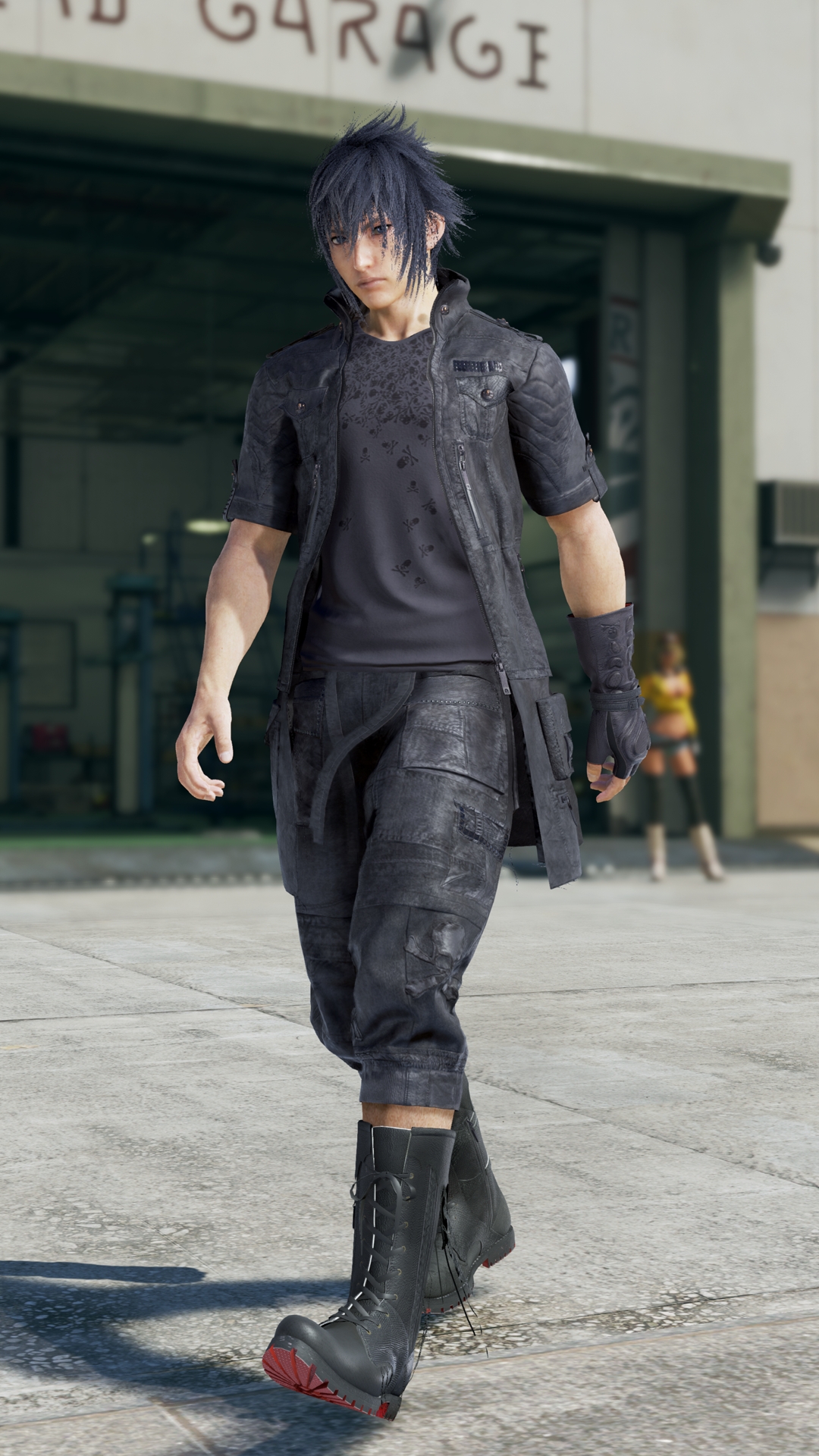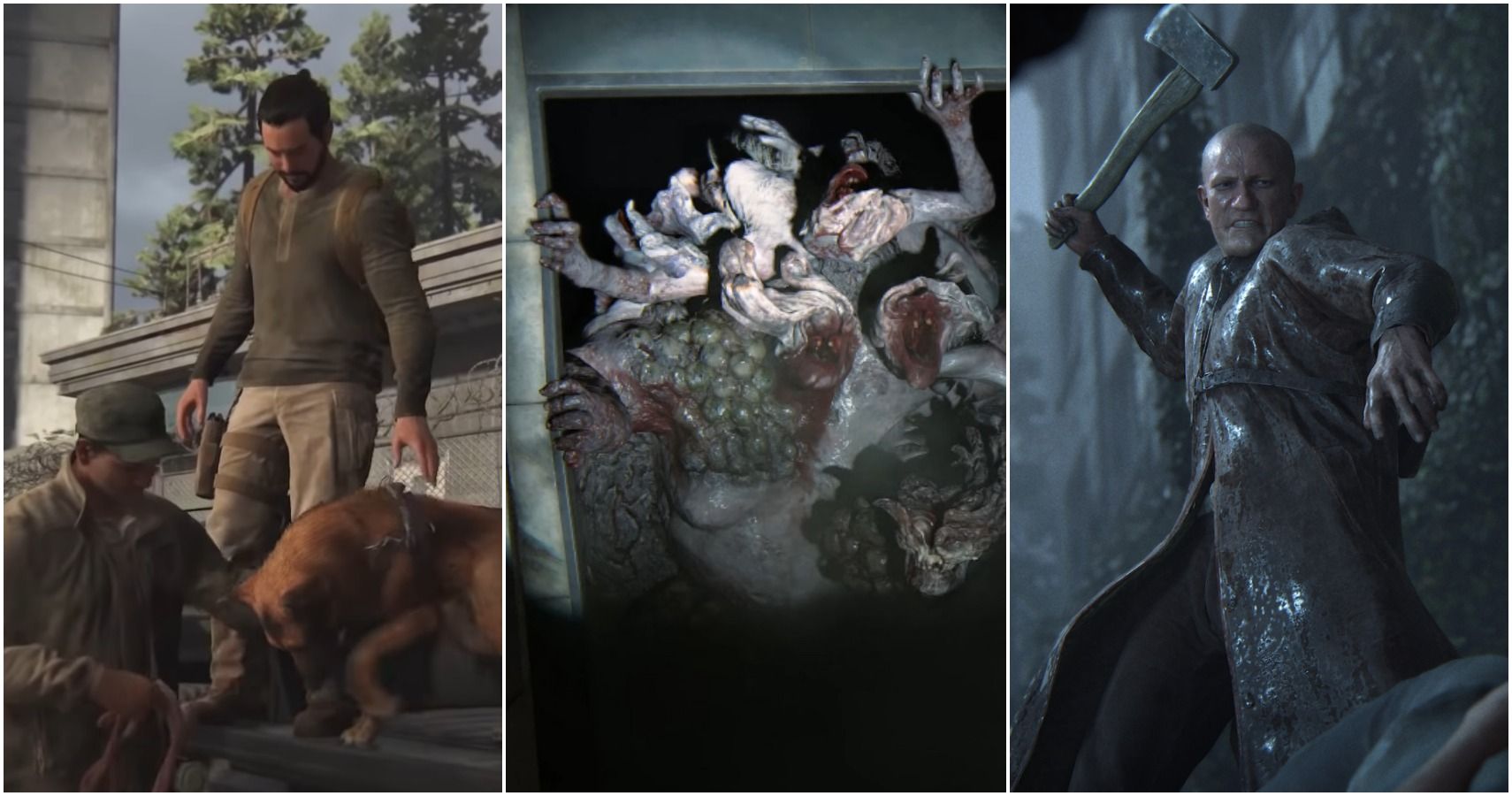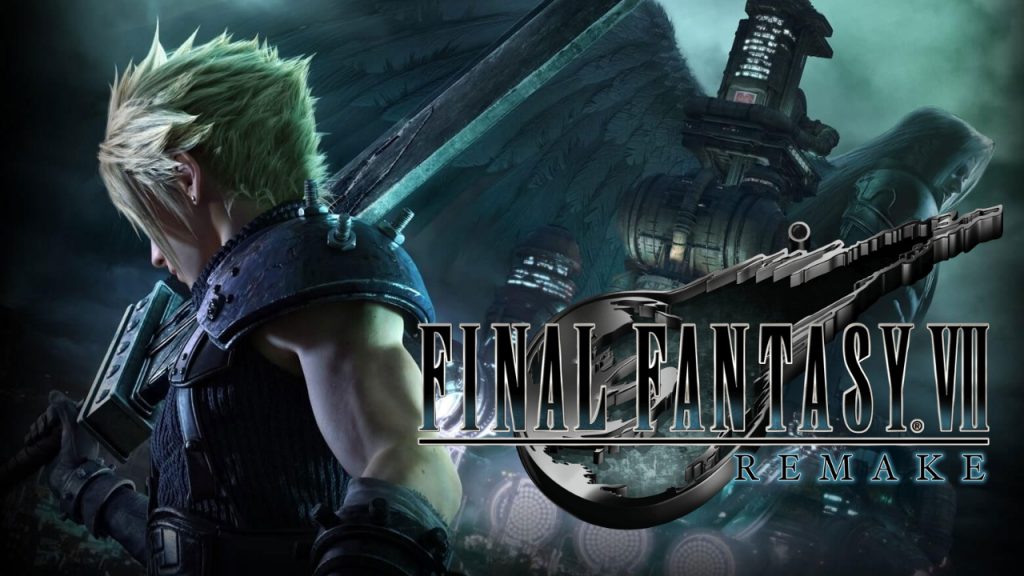
The following is a list of characters from Final Fantasy VII. 1 Player characters 1.1 Optional characters 1.2 Guest characters 2 Non-player characters 2.1 Shinra Staff 2.2 The Turks 2.3 AVALANCHE members 2.4 Weapons 2.5 Other characters 2.6 Historic characters 2.7 Minor characters 2.8 Chocobos 3 Descriptions All Chocobo names are written in CAPITALS in the game itself. Teioh Aimee - A racing. Final Fantasy VII is the seventh main installment in the Final Fantasy series, developed and published by Squaresoft. It was released in January 1997 for the PlayStation, and was later re-released for the Microsoft Windows, PlayStation 3, PlayStation Portable, PlayStation Vita, PlayStation 4, iOS, Android, Xbox One and Switch platforms, it is also included on the PlayStation Classic mini console.


Final Fantasy VII
Final Fantasy VII is often listed as the game that inspired the massive popularity of many the follow-up games in the Final Fantasy Series. It is considered by most gamers to be one of the best games in the series and one of the best games created of all time.
A poll conducted by the Japanese gaming magazine Famitsu listed Final Fantasy VII as the second best game in their compilation of the “Top 100 Favorite Games of All Time”. In 2005, users of GameFAQs.com listed Final Fantasy VII as “The Best Game Ever” and it managed to place second on the list much later in 2009.
The story begins with the protagonist, Cloud Strife, joining up with team AVALANCHE, made up of Barret Wallace, Tifa Lockhart, Biggs, Wedge and later Aeris Gainsborough, Red XIII and Cid Highwind. Their goal is to take down Shinra Company, an organization responsible for Mako mining projects which are slowly destroying the planet (Gaia).
The Turks, a group working for Shinra Company, kidnap Aeris after learning about her past and take her to the Shinra Building in Midgar for testing. A rescue operation to retrieve Aeris ends up failing and the entire AVALANCHE team gets thrown into the Shinra Co. prison cells. They manage to make a miraculous escape though as most of the Shinra Soldiers in the building are killed off by a mysterious ‘man in black’, presumed by Cloud to be his former SOLDIER teammate, Sephiroth. The game follows the story of Cloud and his companions as they track down Sephiroth and attempt to save the world from Sephiroth’s awe inspiring powers.
According to Square-Enix, there were originally no planned remakes of Final Fantasy VII, but there were a number of spin-offs from the series including Before Crisis: Final Fantasy VII, Final Fantasy VII: Advent Children, Dirge of Cerberus: Final Fantasy VII, Crisis Core: Final Fantasy VII and a host of others. Square-Enix has now confirmed that they will be putting together a remake for Final Fantasy VII! Unfortunately the release date for this remake is still unknown.
The number of references to FFVII in other games, including games in the Final Fantasy series, and the sheer number of players that list this game as one of their favorites ensure that the legacy of Final Fantasy VII will live on for many, many years to come!
Review
Final Fantasy VII is undeniably one of the best games ever made. It is one of my favorite games and the one I enjoyed most in the series, but to be fair, I haven’t played Final Fantasy VI (which many fans of the Final Fantasy series claim to be the best title in the franchise). Putting aside the back-and-forth over which of the two games is the best, there is no doubt regarding the impact that Final Fantasy VII has had on the RPG genre and the gaming community as a whole.
The reason why Final Fantasy VII is considered such a great game has to do primarily with the story (as well as the music). The main plot doesn’t stray too far away from your typical sci-fi adventure; a young, relatable main character joins a team of misfits on an adventure to save the world. But the Final Fantasy series has an interesting way of tying in elements of fantasy fiction with futuristic components to create a very unique world and setting (which is officially referred to as Gaia in follow up games in the FFVII franchise, though it is only referred to as “planet” within this title itself).
The story begins in the huge industrial town of Midgar. It’s dark, damp and dreary and the atmosphere does a great job of giving the player the feeling that they are trapped in a dystopian, technology-driven and bleak world. The story takes a huge turn after the team escapes from the Shinra Building. The narrative moves from a single town to a story that unfolds across an entire game-world and this is where many gamers become permanently drawn into the world of Final Fantasy VII.
The detail put into each of the backdrops and into the world map are fantastic and there is enough character development around each of the main cast to keep you vested in the story. All except for a few… Final Fantasy VII has two optional/secret characters that can be obtained during a regular play-through: Yuffie Kisaragi and Vincent Valentine. They are incorporated fairly seamlessly into the story if you obtain them - Vincent’s story is a little bit harder to follow up on (finding Lucrecia’s Crystal Cave is not easy) however it is almost impossible to complete a playthrough without running into Yuffie or her home town of Wutai. But did you notice that neither Yuffie or Vincent appear in any of the full-motion cinematic videos (FMVs) that occur throughout the game?
Final Fantasy titles typically include a couple of wacky, non-human characters and while I take no issues with the addition of Red XIII (a talking mutant feline), Cait Sith is a terrible character that no one in their right mind would use any more than required to complete the game. He feels tacked on and out of place - but my biggest issue with his character has to do with a few scenes in the Temple of the Ancients. *Spoiler Alert* Cait Sith kills himself in order to obtain the Black Materia from the Temple and then reappears very shortly after in a “new body” It’s hard to become immersed in a story and feel any sympathy for a character like Cait Sith when he can just reappear in a new body if anything happens to him. Everything that he is involved in from that point onwards is inconsequential. Send him into every battle by himself - who cares if he gets killed? He can just reappear in another new body. Was no one else bothered by this? Maybe it was just me…
The character that stood out for most gamers was the primary villain and antagonist for the story, Sephiroth. The writers did an excellent job of creating a villain with a compelling background story. His story is deep enough that at certain points of the game you find yourself sympathizing with his situation. This is an element of the game that was executed better than almost every other Final Fantasy title. Final Fantasy VIII and Final Fantasy IX had final bosses and villains that basically appear out of thin air and aren’t involved in the majority of the plot (of each respective game). Final Fantasy X almost had the same issue, but they did spend some time adding clarity around who (or what) Sin was and tying it back to Tidus’ story.
Sephiroth is the character that leaves a lasting impression. From the first interactions early on in the game where he and the main characters are friends, to watching him slowly go mad from the realization of who and what he is, to the final battle against him in the core of the planet (namely, the very last scene). Creating an effective antagonist and doing it as well as the game writers did, is not an easy task and I commend them for what they were able to accomplish.
/cdn.vox-cdn.com/uploads/chorus_asset/file/7902313/FFVII_Remake_cg.jpg)
The background music, composed by none other than Nobuo Uematsu, is top notch. Nobuo Uematsu conducted the music in most of the previous Final Fantasy titles and many to follow Final Fantasy VII. He is considered one of the most famous and well respected composers of video game music and this title stands as a testament to his skills as a composer. It left a lasting enough impact on me during my first playthrough that I bought the original soundtrack and still have many of the tunes permanently etched into my brain.
But make no mistake - despite the fact that this is my favorite game and despite the numerous awards and accolades the game has received, there are some glaring flaws and issues. For example, this was the first Final Fantasy game to transition to a 3D style environment with pre-rendered backgrounds and this transition was not flawless. The graphics have aged poorly (to say the least) and many new players and fans of the franchise who go back to play (or replay) older games in the series will comment on how the graphics look terrible.
There are also a ton of bugs and unfinished areas of the game. There is a full section on the Final Fantasy Wiki detailing areas of the game that were dummied out, or rather, removed so that they could no longer be accessed during a regular playthrough yet still visible in the games coding. There are misspellings galore (which I identify as one comes across them in the walkthrough section) and tons of items which have no use (including the Tissues received from Battle Square and the 1/35 Soldiers that can be obtained in Junon). There is also nothing more irritating than having to hold the Cancel button in order to run throughout the entire game; completely unnecessary.
The Materia system was very straightforward with a relatively quick learning curve, yet it was complex enough to allow you to employ a ton of different strategies and Materia combinations. There was also a lot of end-game content to explore before the final battle against Sephiroth, so the replay value for the game is fairly strong. I personally have played through it at least 10 times and I continue to enjoy each playthrough.
The number of remakes, additions and prequels to come out of this game is huge. There is no doubt in my mind that it is one of the strongest (if not the strongest) titles in the Final Fantasy series. I highly recommend that you give the game a try if you have never been exposed to it. This game will remain a timeless classic and its impact on RPGs will continue for years to come. Overall score: 10/10.
Supporting the Website
The strategy guides and walkthroughs on Jegged.com will always be 100% free to read and to use, but if you’d like to consider supporting the website in some way, consider visiting the Support section for more information.
Any support you’re able to provide, or even just a quick thank you note sent my way, is greatly appreciated. Happy gaming!

Table of Contents
- Magic Materia (Green)
- Summon Materia (Red)
- Command Materia (Yellow)
- Support Materia (Blue)
- Independent Materia (Purple)
| Final Fantasy VII | |
|---|---|
| Japanese title | ファイナルファンタジーVII (Fainaru Fantajī Sebun) |
| Developer(s) | Square |
| Publisher(s) | Square |
| Distributor(s) | PlayStation Network, Nintendo eShop, Xbox Live Arcade |
| Designer(s) | Hironobu Sakaguchi |
| Release date(s) | PlayStation January 31, 1997 November 14, 1997 Windows May 31, 1998 August 14, 2012 PlayStation 3, PlayStation Portable June 2, 2009 iOS July 30, 2015 PlayStation 4 December 5, 2015 Android July 7, 2016 Nintendo Switch March 26, 2019 Xbox Live Arcade March 26, 2019 |
| Genre(s) | RPG |
| System(s) | PlayStation, Windows, PlayStation 3, PlayStation Portable, iOS, PlayStation 4, Xbox One, Nintendo Switch |
| Modes | Single player |
| Rating(s) | PEGI: Ages 12+ |
| Preceded by | Final Fantasy VI |
| Followed by | Final Fantasy VIII |
| Series | Final Fantasy |
| PCGamingWiki | |
|---|---|
| Neoseeker Related Pages | |
| Twitch | Final Fantasy VII Channel |
| Search | |
| Search | |
Final Fantasy VII was a seminal release in Square Enix's Final Fantasy series, widely regarded as one of the most successful gaming franchises in history. Released in 1997, FFVII was a gamble for the company. Prior to VII all the Final Fantasy games had been on Nintendo consoles but VII was released for the SonyPlayStation. FFVII took the series in a new direction, which it has pursued ever since. This landmark release paid off, as it is thought by some to be the most popular and well-liked game in the Final Fantasy series, possibly the best Japanese RPG ever made or even the best game ever made.
Final Fantasy VII was released under the same name in Japan, the US and Europe — correcting numbering inconsistencies between the regions. With each new release, Squaresoft (now Square Enix) added new features. The American, European (PAL), and international releases contained bonus material not seen before, namely the two Weapons, Ruby and Emerald.
In 2009 the game was released for the PS3 and PSP by way of the PlayStation Network.
In 2012 the game was re-released for PC, and included 36 achievements.
The iOS and Android version was released in July 2015 and includes the option to turn off all random encounters (battles interwoven into the story still occur) and to automatically activate max stats for the current party level at any time outside of battle.
The game was released on the PlayStation 4 on December 5, 2015. This version is based on the PC re-release, and includes Trophies.
The PlayStation Classic console was released on December 3, 2018 and has Final Fantasy VII included as part of the 20 games list. This game has a save state feature that wasn't available on the Playstation 1.
The game was released on Xbox One and Nintendo Switch simultaneously on March 26, 2019. This version is also based on the PS4 version. The Switch version holds the distinction of being the first time that the game was released legally on Nintendo hardware, excluding bootlegs.
Continue to:
Controls →
Walkthrough →
Table of Contents
Final Fantasy 7 Wallpaper
- Magic Materia (Green)
- Summon Materia (Red)
- Command Materia (Yellow)
- Support Materia (Blue)
- Independent Materia (Purple)
editFinal Fantasy series
Final Fantasy ·II ·III ·IV ·V ·VI ·VII ·VIII ·IX ·X ·XI ·XII ·XIII ·XIV (A Realm Reborn) ·XV ·XVI
Direct sequels:IV: The After Years ·X-2
Remakes:Final Fantasy VII Remake ·
FF7 Compilation:Before Crisis ·Dirge of Cerberus ·Dirge of Cerberus Lost Episode ·Crisis Core
FF12 Ivalice Alliance:Vagrant Story ·Revenant Wings
Gaiden sub-series:The 4 Heroes of Light ·Bravely Default ·Bravely Second: End Layer ·Bravely Default II
Legends:Dimensions ·Dimensions II ·Crystal of Dimensions
Brave Exvius:Brave Exvius ·War of the Visions
Fighting games:Dissidia ·Dissidia 012 [duodecim] ·Dissidia NT
Rhythm games:Theatrhythm ·Curtain Call
Others:Mystic Quest ·Airborne Brigade ·Explorers
Compilations:Final Fantasy I-II ·I & II: Dawn of Souls ·Origins ·Chronicles ·Anthology ·IV: The Complete Collection
Sub-series:Final Fantasy 7 Achievement Guide
Crystal Chronicles ·Tactics ·Fabula Nova Crystallis Final Fantasy XIII